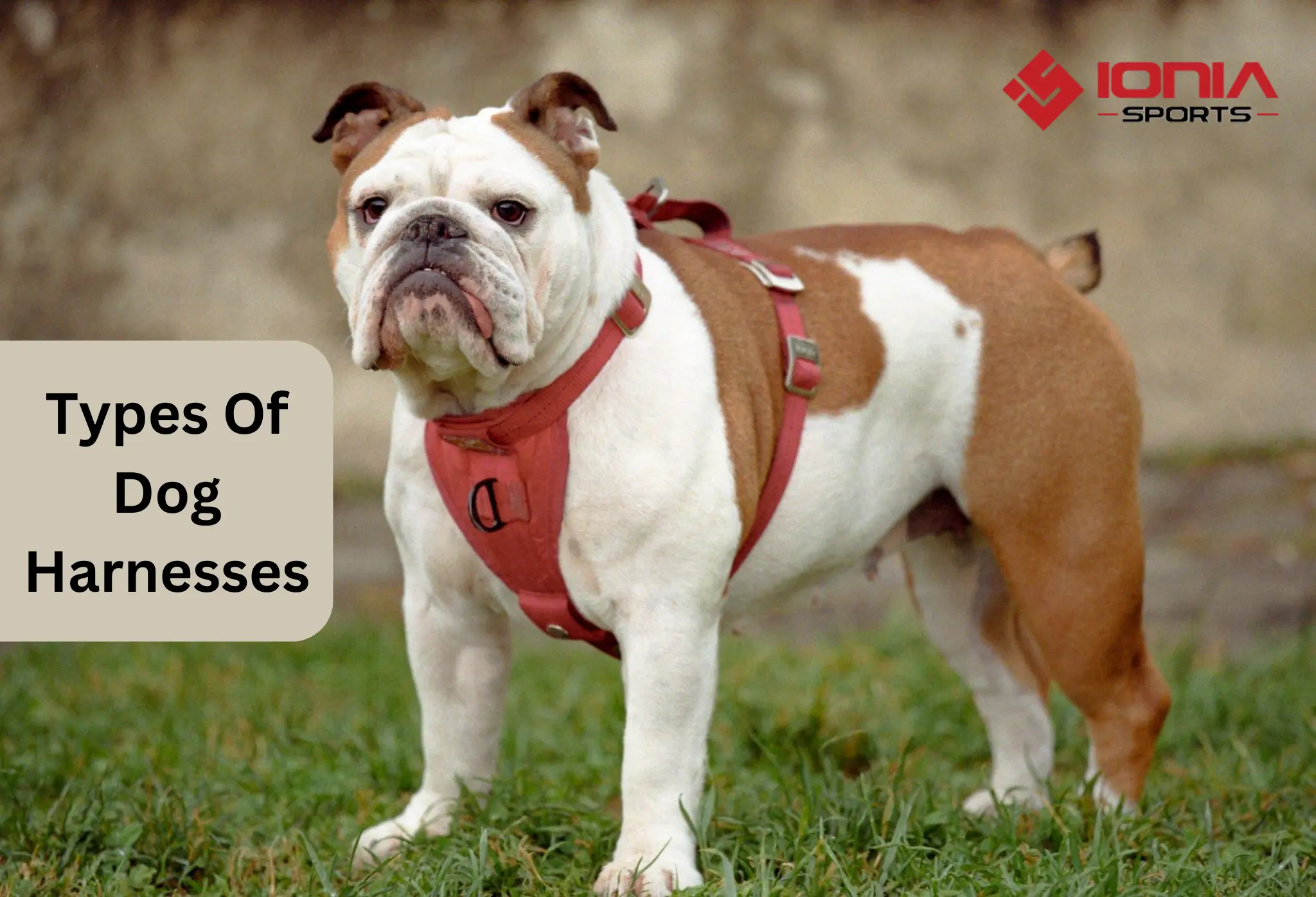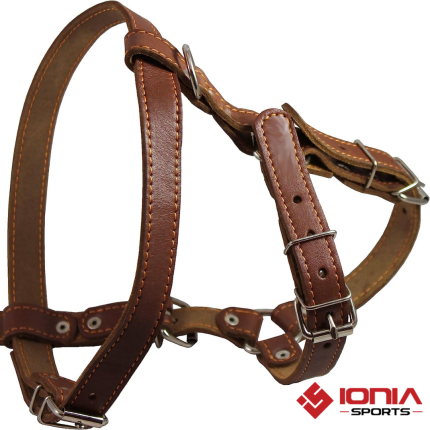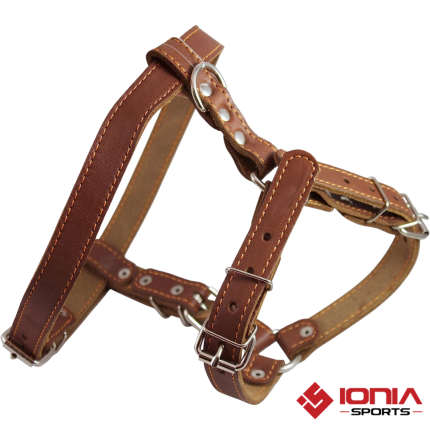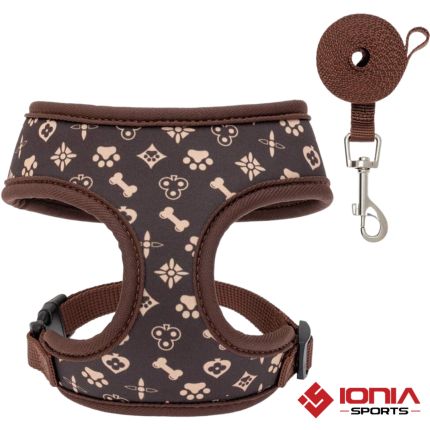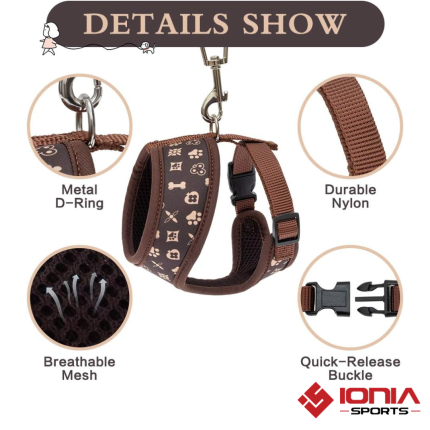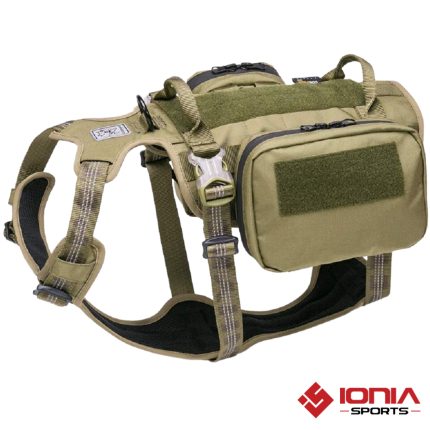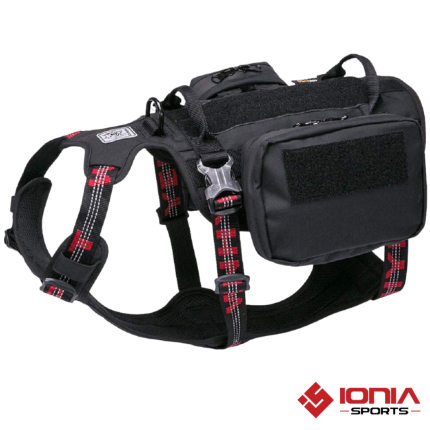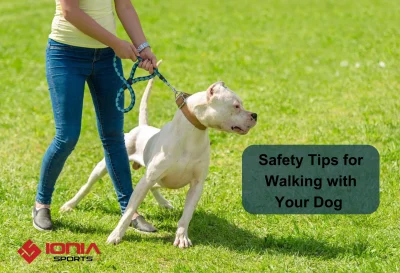Choosing the right harness for your furry friend ensures comfort, safety, and control during walks or activities. With many options available for different types of dogs like Back Clip Dog Harnesses, Escape-Proof Dog Harnesses, and Step-In Dog Harnesses available at Ionia Sports understanding the types of dog harnesses and their functionalities becomes essential before choosing a harness.

Types of Dog Harnesses
Designed to curb pulling behavior, these harnesses distribute pressure evenly across the body, discouraging dogs from pulling ahead during walks. They often feature front attachment points, redirecting the dog’s attention back towards the owner.
These versatile harnesses provide a customizable fit, accommodating various body shapes and sizes of large-size dogs. The adjustable straps ensure a snug and secure hold without restricting movement.
Equipped with a front attachment point, these harnesses assist in redirecting a dog’s forward motion, promoting better control and avoiding any pulling.
Designed with escape artists in mind, these harnesses feature specialized designs and closures that prevent dogs from slipping out, ensuring their safety and also making a dangerous dog escape-proof. This type of harness makes you and other persons safe from any kind of mishaps.
With a user-friendly step-in design, these harnesses simplify the process of getting your dog ready for a walk, suitable for dogs uncomfortable with overhead harnesses.
Harness vs Collar
While collars have been traditional choices, harnesses provide distinct advantages. Harnesses evenly distribute pressure, reducing strain on the neck and harness also preventing potential injuries, making them a safer option, especially for dogs prone to respiratory issues or tracheal damage.
Selecting the Best Harness
Consider factors like size, material, and purpose when choosing a harness. A proper fitting is important; a harness that’s too tight can cause discomfort, while a loose one might allow the dog to slip out. the proper size harnessses is only available at our harnesses collection available at Ionia Sports.
Benefits of Specific Harness Types
- No-Pull Harnesses Ideal for leash training and dogs learning to walk politely without pulling.
- Adjustable Harnesses it can change size are really handy. They work for puppies as they grow or for dogs with different body shapes.
- Front Clip Harnesses Assist in redirecting a dog’s attention, aiding in leash training.
- Back Clip Harnesses Simple and comfortable for dogs accustomed to leash walking without pulling.
- Escape-Proof Harnesses Ensures security for dogs known for their Houdini-like escapes.
- Step-In Harnesses Easy-to-use design for dogs uncomfortable with traditional overhead harnesses.
Dog Harness Training
When you want your dog to wear a harness, take it slow. Begin with short times using the harness. Give treats and praise when they wear it. As they get used to it, make them wear it for longer. That way, they’ll feel comfy with the new gear. if you want a proper guide or safety tips for walking your dog with a leather harness read this blog.
Safety Tips For Walking Your Dog With A Leather Harness
Frequently Asked Questions
To measure your dog for a harness, you’ll need a measuring tape. Measure around the widest part of your dog’s chest, typically just behind the front legs. Take note of this measurement and refer to the manufacturer’s sizing guide for the appropriate harness size.
Front clip harnesses are great for training because they help you control your dog better. They make it easier to get your dog to pay attention to you. These harnesses are good at stopping dogs from pulling too much when you’re teaching them. People who use positive ways to train their dogs often like using these harnesses.
Step-in harnesses are generally suitable for most dogs. However, some dogs may be uncomfortable with this style, especially if they’re not used to having something put over their legs. It’s essential to introduce the harness gradually and observe your dog’s comfort level.
Transitioning from a collar to a harness should be slow. Start by introducing the harness during short, positive sessions. Associate the harness with positive experiences, such as treats and praise. Slowly increase the time your dog wears the harness until they’re comfortable with the switch.
Padded harnesses can work well for most dog breeds, particularly those with sensitive skin or breeds that engage in extended physical activities. However, it’s essential to consider the individual dog’s comfort and preferences when selecting a harness.
Conclusion
Selecting the right dog harness is crucial for your pet’s safety, comfort, and your walking experience. Understanding the different types and their benefits enables you to make an informed choice for your furry companion. In this article, I hope everyone understands the different types of harnesses and their uses that can help you choose a proper harness for your furry companion. these harness avalliable at IoniaSports.
For further information, please do not hesitate to contact us.

